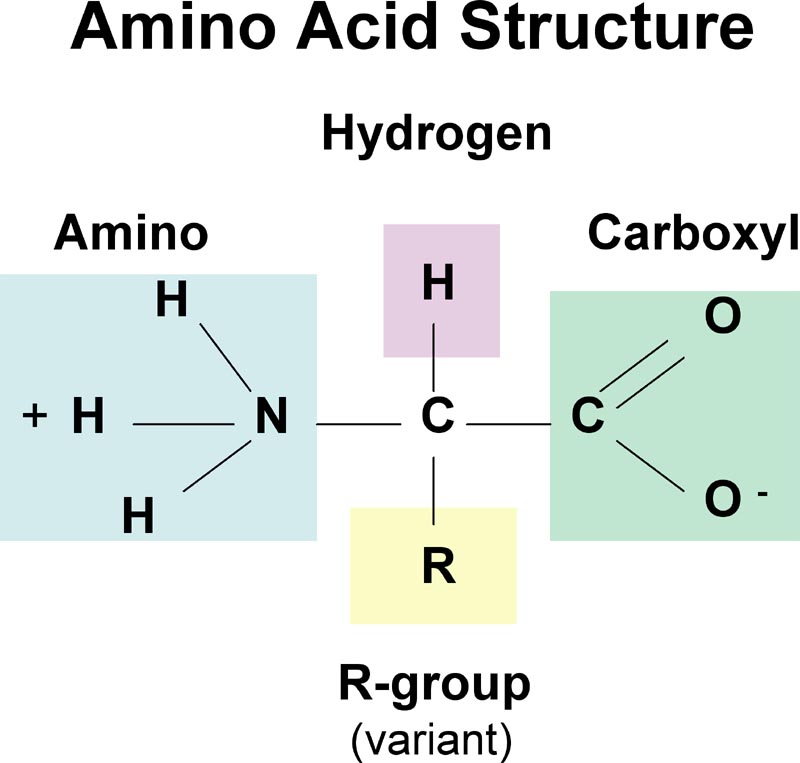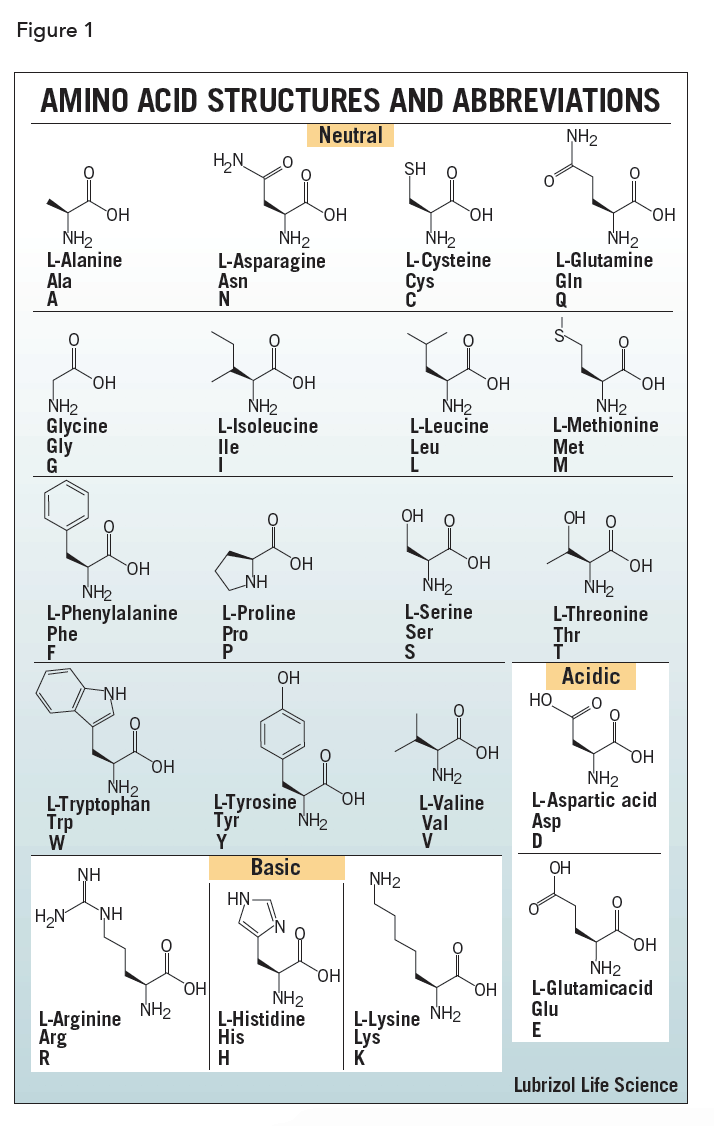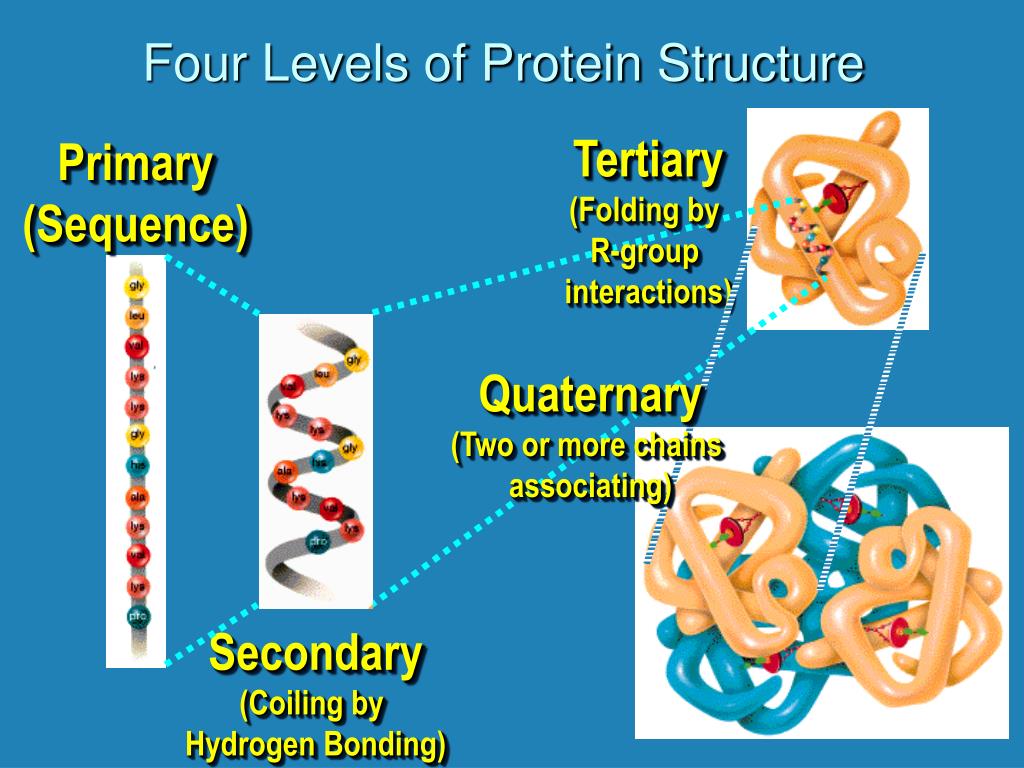
/protein-structure-373563_final11-5c81967f46e0fb00012c667d.png)

This reaction forms a peptide bond and a water molecule and is another example of dehydration synthesis ( ). Īmino acids may chemically bond together by reaction of the carboxylic acid group of one molecule with the amine group of another. A few examples illustrating these possibilities are provided in. These groups are composed primarily of carbon, hydrogen, oxygen, nitrogen, and sulfur, in the form of hydrocarbons, acids, amides, alcohols, and amines. The unique characteristics of the functional groups and R groups allow these components of the amino acids to form hydrogen, ionic, and disulfide bonds, along with polar/nonpolar interactions needed to form secondary, tertiary, and quaternary protein structures. The primary structure of a protein, a peptide chain, is made of amino acid residues. A residue is a monomer that results when two or more amino acids combine and remove water molecules. The fourth group bonded to the α carbon varies among the different amino acids and is called a residue or a side chain, represented in structural formulas by the letter R.

Amino Acids and Peptide BondsĪn amino acid is an organic molecule in which a hydrogen atom, a carboxyl group (–COOH), and an amino group (–NH 2) are all bonded to the same carbon atom, the so-called α carbon. The molecules derived from amino acids can function as structural components of cells and subcellular entities, as sources of nutrients, as atom- and energy-storage reservoirs, and as functional species such as hormones, enzymes, receptors, and transport molecules. These compounds are capable of bonding together in essentially any number, yielding molecules of essentially any size that possess a wide array of physical and chemical properties and perform numerous functions vital to all organisms.

Describe the chemical structures of proteins.Describe the fundamental structure of an amino acid.


 0 kommentar(er)
0 kommentar(er)
